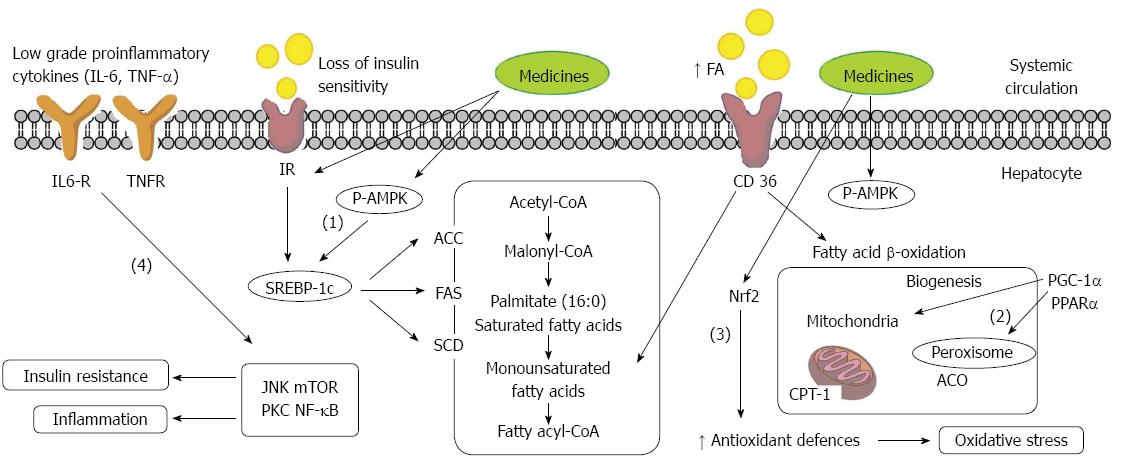Copyright
©The Author(s) 2016.
World J Gastroenterol. Aug 14, 2016; 22(30): 6890-6905
Published online Aug 14, 2016. doi: 10.3748/wjg.v22.i30.6890
Published online Aug 14, 2016. doi: 10.3748/wjg.v22.i30.6890
Figure 2 Underlying mechanisms of herbal medicines for the treatment of nonalcoholic fatty liver disease.
Medicines may prevent cellular damage in hepatocytes associated with NAFLD through different mechanism of action including: (1) depressing lipogenesis through down-regulating sterol regulatory element-binding protein 1c (SREBP-1c); (2) increasing β-fatty acid (FA) oxidation by up-regulating peroxisome proliferator activated receptor α (PPARα); (3) increasing insulin sensitivity and depressing oxidative stress through increased antioxidant levels via nuclear factor-erythroid 2-related factor 2 (Nrf2); and (4) inhibiting activation of inflammatory pathways. TNFR: TNFα receptor; IL6-R: IL-6 receptor; IR: Insulin receptor; CD36: Cluster of differentiation 36/FA translocase; p-AMPK: Phosphorylated AMP-activated protein kinase α; ACC: Acetyl-CoA carboxylase; FAS: Fatty acid synthase; SCD: Stearoyl-CoA desaturase; GPAT: Glycerol-3-phosphate acyltransferase; CPT-1: Carnitine palmitoyl transferase 1; ACO: Acyl-CoA oxidase; PGC-1: PGC1α: PPARγ coactivator-1α; JNK: c-Jun N-terminal kinase; PKC: Protein kinase C; mTOR: Mammalian target of rapamycin.
- Citation: Yao H, Qiao YJ, Zhao YL, Tao XF, Xu LN, Yin LH, Qi Y, Peng JY. Herbal medicines and nonalcoholic fatty liver disease. World J Gastroenterol 2016; 22(30): 6890-6905
- URL: https://www.wjgnet.com/1007-9327/full/v22/i30/6890.htm
- DOI: https://dx.doi.org/10.3748/wjg.v22.i30.6890









